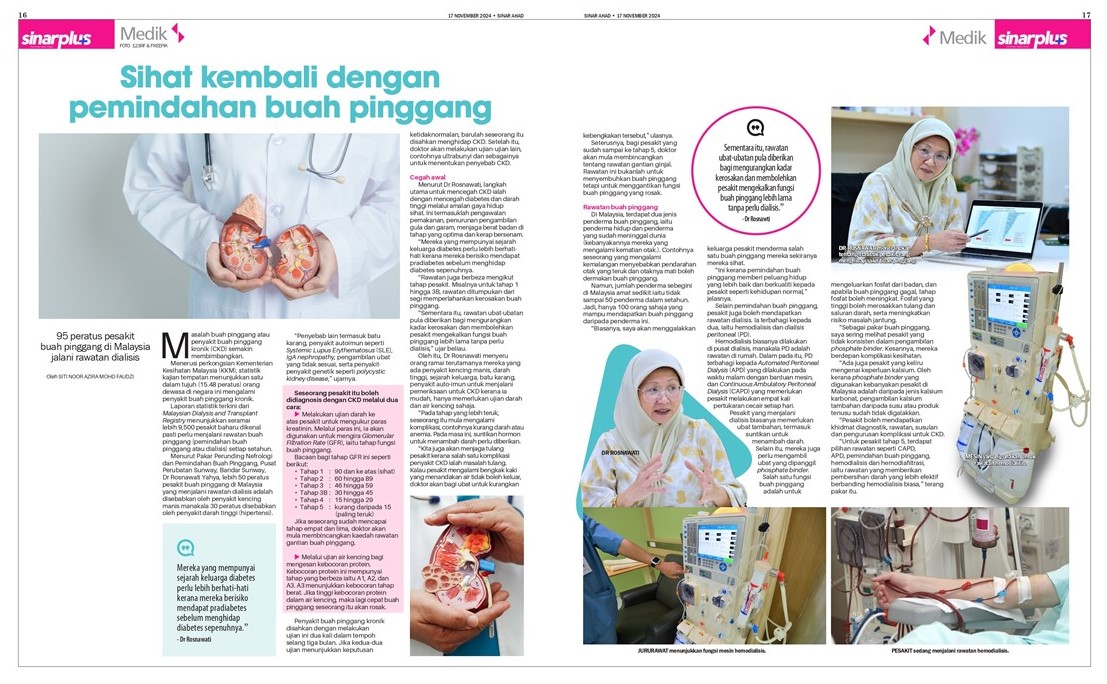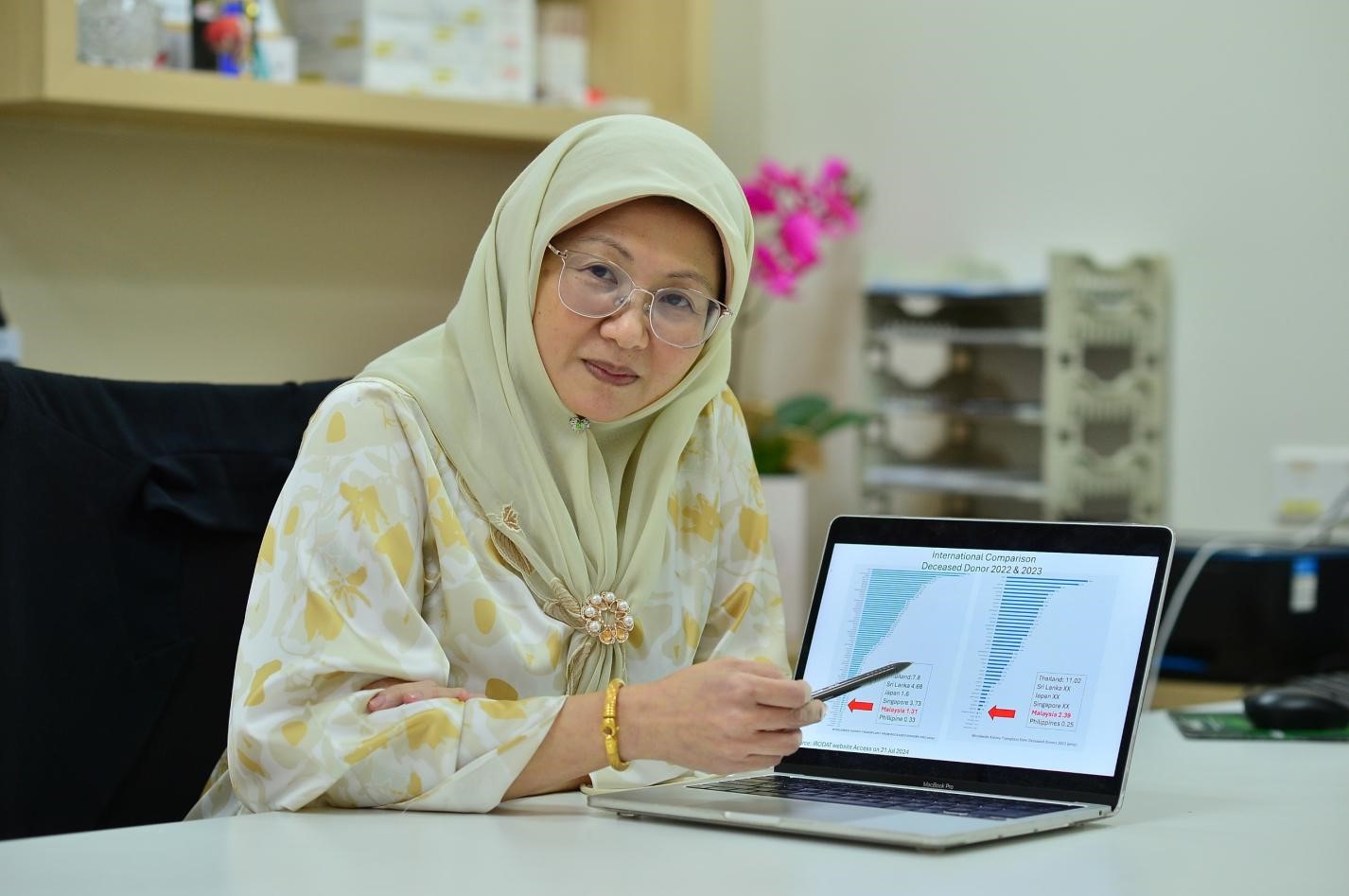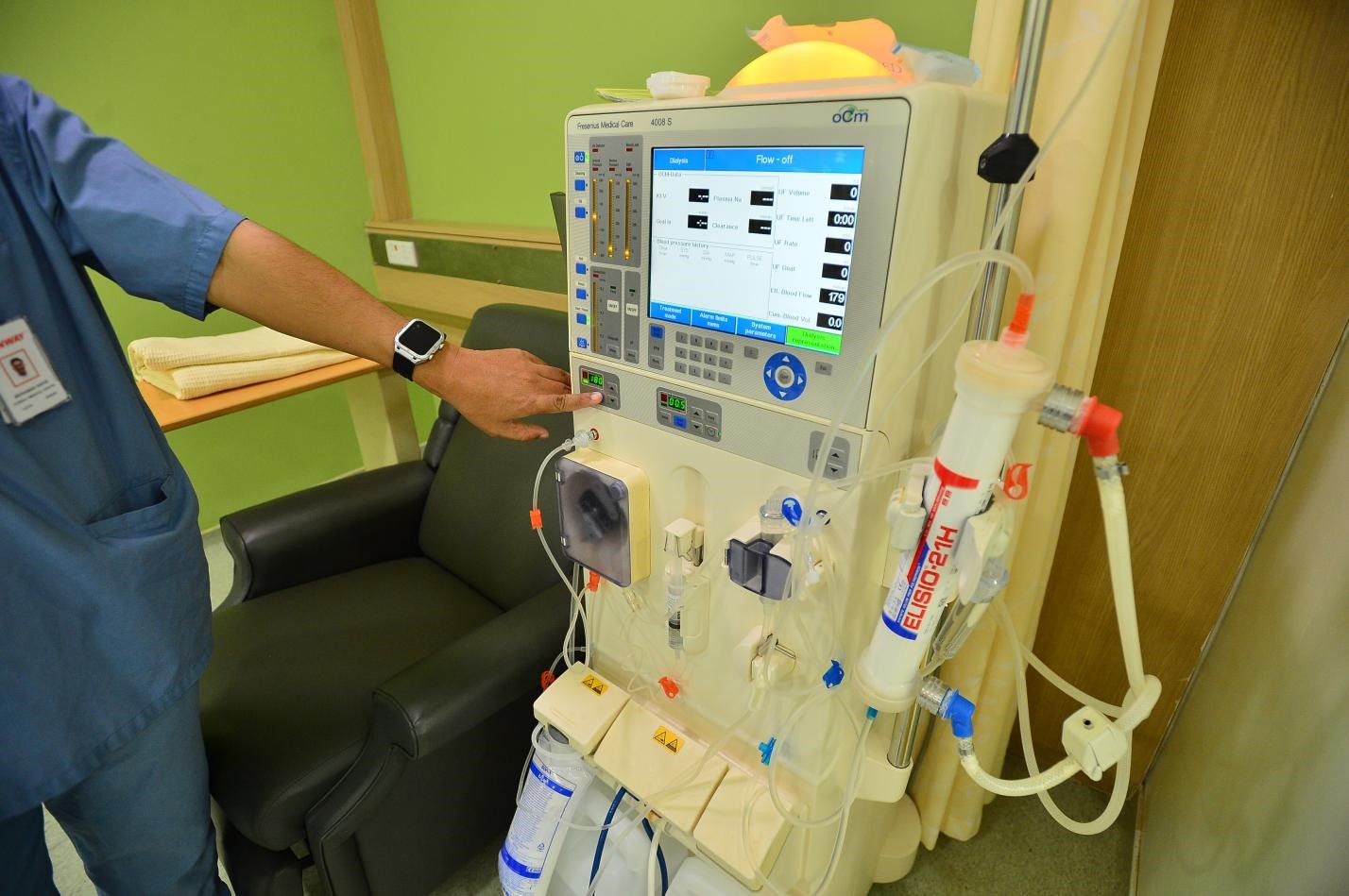Get Healthy Again with A Kidney Transplan
17 November 2024

Chronic kidney disease (CKD) is becoming an increasingly worrying issue.
According to a sharing from the Ministry of Health Malaysia (MOH), local study statistics show that one in seven (15.48%) adults in the country suffers from chronic kidney disease.
The latest statistics from the Malaysian Dialysis and Transplant Registry show that over 9,500 new patients are identified every year as needing kidney replacement therapy (kidney transplant or dialysis).
According to Dr. Rosnawati Yahya, consultant nephrologist and kidney transplant specialist at Sunway Medical Centre, Sunway City, more than 50% of kidney patients in Malaysia undergoing dialysis are due to diabetes, while 30% are caused by hypertension (high blood pressure).
"Other causes include kidney stones, autoimmune diseases such as Systemic Lupus Erythematosus (SLE), IgA nephropathy, inappropriate use of medication, as well as genetic diseases such as polycystic kidney disease," she explained.
A person can be diagnosed with CKD in two ways:
1) By performing a blood test on the patient to measure creatinine levels. This level is used to calculate the Glomerular Filtration Rate (GFR), which indicates kidney function.
The GFR readings are as follows:
- Stage 1: 90 and above (normal)
- Stage 2: 60 to 89
- Stage 3: 46 to 59
- Stage 3B: 30 to 45
- Stage 4: 15 to 29
- Stage 5: less than 15 (most severe)
If a person reaches stage 4 or 5, doctors will begin discussing kidney replacement treatment methods.
2) Through a urine test to detect protein leakage. This protein leakage varies in levels, namely A1, A2, and A3. A3 indicates severe leakage. If there is a high level of protein leakage in the urine, the kidneys will deteriorate faster.
Chronic kidney disease is confirmed by performing these tests twice over a period of three months. If both tests show abnormal results, the person is confirmed to have CKD. After this, doctors will conduct other tests, such as ultrasounds, to determine the cause of CKD.
Preventive Measures
 According to Dr. Rosnawati, the key step in preventing CKD is to prevent diabetes and high blood pressure through a healthy lifestyle.
According to Dr. Rosnawati, the key step in preventing CKD is to prevent diabetes and high blood pressure through a healthy lifestyle.
This includes controlling diet, reducing sugar and salt intake, maintaining an optimal weight, and exercising regularly.
"Those with a family history of diabetes need to be more cautious because they are at risk of developing prediabetes before fully developing diabetes," she said.
"Treatment also varies depending on the patient's stage. For stages 1 to 3B, treatment focuses on slowing the progression of kidney damage.
"Meanwhile, medications are given to reduce the rate of damage and allow patients to maintain kidney function for a longer time without needing dialysis," she added.
Dr. Rosnawati urged the public, especially those with diabetes, hypertension, a family history, kidney stones, or autoimmune diseases, to undergo CKD screening, as it is simple and only requires a blood and urine test.
"At more advanced stages, a patient may experience complications, such as anaemia. At this stage, hormone injections to increase blood levels may be necessary.
"We also monitor the bones of CKD patients, as one of the complications of CKD is bone problems. If the patient experiences swollen legs, which indicate that fluid cannot be excreted, doctors will prescribe medication to reduce the swelling," she explained.
Furthermore, for patients who reach stage 5, doctors will begin discussing kidney replacement therapy. This treatment does not cure the kidneys but replaces the function of the damaged kidneys.
Kidney Treatment
In Malaysia, there are two types of kidney donors; living donors, and those who have passed away (mostly from brain death). For example, someone who suffers a severe head injury resulting in brain death can donate their kidney.
However, the number of such donors in Malaysia is very small, with fewer than 50 donors per year. As a result, only about 100 people are able to receive kidneys from these donors.
 "Usually, I encourage the families of patients to donate one of their kidneys if they are healthy. This is because a kidney transplant provides a better and higher quality of life for patients, enabling them to live a normal life," she explained.
"Usually, I encourage the families of patients to donate one of their kidneys if they are healthy. This is because a kidney transplant provides a better and higher quality of life for patients, enabling them to live a normal life," she explained.
In addition to kidney transplants, patients can also receive dialysis treatment. This is divided into two types: haemodialysis and peritoneal dialysis (PD).
Haemodialysis is usually performed at a dialysis centre, while PD is done at home. PD is further divided into Automated Peritoneal Dialysis (APD), which is done at night with the help of a machine, and Continuous Ambulatory Peritoneal Dialysis (CAPD), which requires the patient to perform four fluid exchanges each day.
Patients undergoing dialysis typically require additional medication, including injections to increase blood levels. They also need to take a medication called phosphate binder.
One of the functions of the kidneys is to remove phosphate from the body, and when the kidneys fail, phosphate levels can increase. High phosphate levels can damage bones and blood vessels, as well as increase the risk of heart problems.
"As a kidney specialist, I often see patients who are inconsistent in taking their phosphate binders. As a result, they face health complications.
"There are also patients who are confused about the need for calcium. Since most phosphate binders used by patients in Malaysia are calcium carbonate-based, additional calcium intake from milk or dairy products is no longer recommended," said Dr. Rosnawati.
"Patients can receive diagnostic services, treatment, follow-up care, and management of CKD complications.
"For stage 5 patients, there are treatment options such as CAPD, APD, kidney transplant, haemodialysis, and also haemodiafiltration, which provides more effective blood cleaning than regular haemodialysis," the specialist concluded.
Source: Sinar Plus
后退






